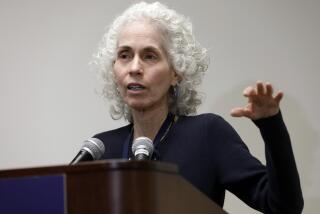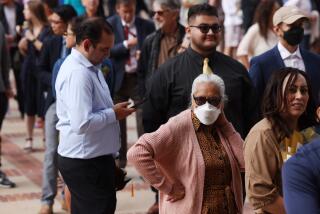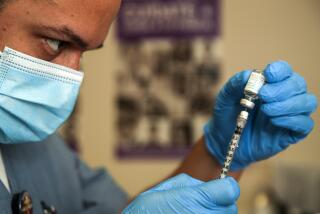County Orders Reports on Illness
- Share via
Los Angeles County will begin next month requiring doctors and hospitals to report all cases of invasive pneumococcal disease--an aggressive bacterial illness--to public health officials so they can track the level of antibiotic resistance.
“We have been using and abusing antibiotics for so many years that, in many cities and states, we have been seeing resistance of this organism to routine antibiotics,” said Dr. Laurene Mascola, chief of acute communicable disease control for the county Department of Health Services.
Already, almost a quarter of cases are resistant to penicillin, which has caused doctors to stop using the medication as an initial preferred treatment.
Officials are worried that the sometimes fatal disease, which causes meningitis and blood infections, will develop resistance to other medications, limiting options for treatment.
Last week, several health groups launched a campaign to educate the public about the dangers of taking antibiotics for colds and flu, which are caused by a virus.
At many local pharmacies, a free brochure in 10 languages will be distributed to customers as they pick up their prescriptions.
Invasive pneumococcal disease will be added to a list of more than 80 conditions--including AIDS, measles and anthrax--that must be reported to the county by health-care providers.
Los Angeles County health officials also say that they want to study the effect of a childhood vaccine, called Prevnar, which protects against many infections caused by Streptococcus pneumoniae bacteria.
These illnesses include invasive pneumococcal disease, and ear and sinus infections.
For seven years, Los Angeles County has been asking some labs and infection-control doctors to voluntarily report cases of invasive pneumococcal disease. The number of reported cases dropped 21% in 2001, to 603.
The decrease was greatest among children younger than 5 who had access to the Prevnar vaccine.
Until mandatory reporting begins, officials say they will not know for sure whether their data are representative of the county at large.
“We wanted to get a little more teeth into reporting,” said Dr. Elizabeth Bancroft, a medical epidemiologist with the county.
More to Read
Sign up for Essential California
The most important California stories and recommendations in your inbox every morning.
You may occasionally receive promotional content from the Los Angeles Times.










